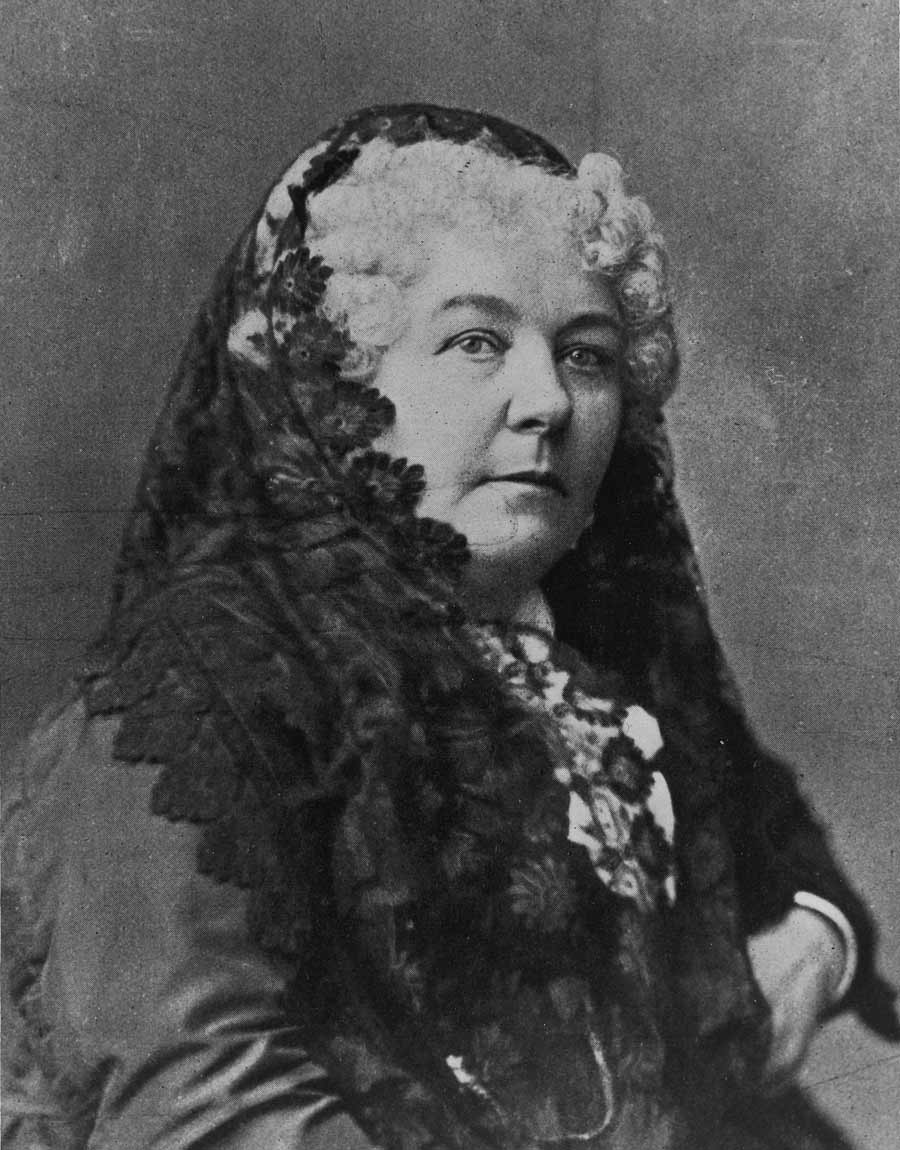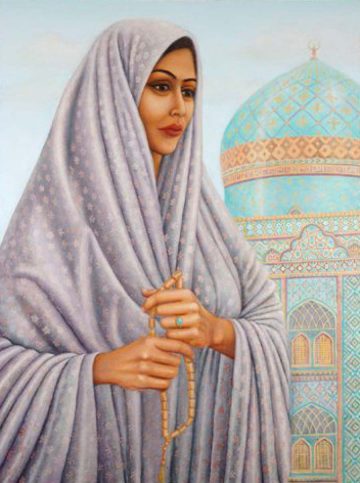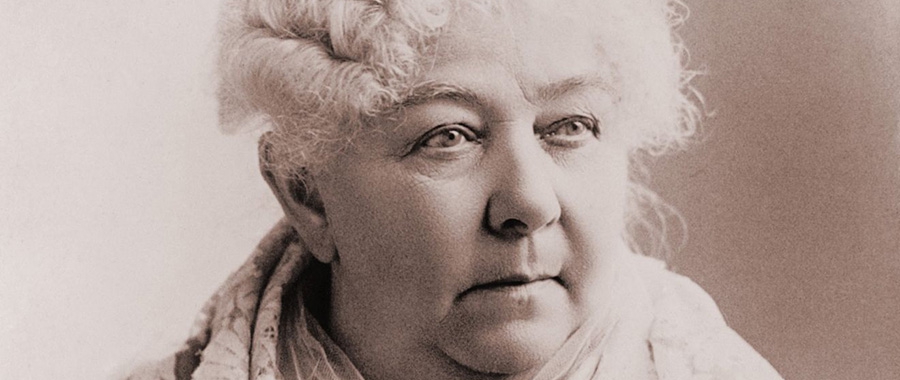The views expressed in our content reflect individual perspectives and do not represent the authoritative views of the Baha'i Faith.
The Seneca Falls Convention, a two day conference attended by almost 200 participants, took place in the summer of 1848.
At the Convention, Elizabeth Cady Stanton drafted the Declaration of Rights and Sentiments which detailed a list of grievances and statements of facts about the rights of women. At the Convention, she stated:
Verily, the world waits the coming of some new element, some purifying power, some spirit of mercy and love. The voice of woman has been silenced in the state, the church, and the home, but man cannot fulfill his destiny alone, he cannot redeem his race unaided. … The world has never yet seen a truly great and virtuous nation, because in the degradation of woman the very fountains of life are poisoned at their source. It is vain to look for silver and gold from mines of copper and lead.

Elizabeth Cady Stanton
Although Susan B. Anthony did not attend the Convention, she was a contemporaneous advocate of the rights of women. The two women met several years after the Seneca Falls Convention. Like Stanton, she was a vocal abolitionist, and could clearly see that until women were able to vote, their voice would not be taken seriously.
Anthony and Stanton together founded the National Woman Suffrage Association, and they collaborated to produce a weekly publication that advocated for women’s rights. Susan B. Anthony’s contribution in this arena is immense, far beyond the scope of this article. She was a pioneer and trailblazer in the march for the rights of women. Click here for more information about Susan B. Anthony.
It would be difficult to overemphasize the vision of both Tahirih, the early Babi poetess and advocate for women’s emancipation, and women’s rights advocate Elizabeth Cady Stanton. Both of these remarkable women worked to free their sisters—all the women of the world—from the yoke of oppression. The capacity to be able to see beyond one’s immediate circumstances and recognize that the current reality cannot and will not always prevail takes fortitude, courage and insight, and both Tahirih and Stanton had those qualities in great quantity.
Surely the souls of these two brave women were connected to realms beyond human conception and nurtured by a divine Source.

Tahirih
Elizabeth Cady Stanton passed away in 1902 and Susan B. Anthony passed away in 1906. Their efforts in the 1840s yielded fruit 70 years later with the passage of the 19th Amendment in 1920 that gave American women the right to vote. Tahirih was killed in 1852, four years after her heroic act of going without the traditional veil at the Conference of Badasht, joining 20,000 other Babis who were martyred for their Faith. Alas, even in 2017, the rights of women in Iran are still limited, however, the influence of the teachings of the Bab and Baha’u’llah is manifest and evident on the world stage.
The Baha’i Faith is now a well-established global religion throughout the world’s nations, and its teachings increasingly form the spiritual foundation of community building activities in country after country. In some ways, Tahirih’s actions at the conference of Badasht to clarify the break that the Babi Faith made from the past helped to prepare Babis to accept the mission of Baha’u’llah—and advanced the Baha’i principle of the equality of women and men everywhere.
A word of acknowledgement should be made about the attention and encouragement that both the fathers of Elizabeth Cady Stanton and Tahirih gave them. Stanton’s father was an attorney, a congressman, and a judge, first of a circuit court, and then in 1847 of the New York Supreme Court. He introduced his daughter to the law as a young child and she enjoyed reading his books. Similarly, Tahirih’s father, although initially wishing she had been born a boy, eventually recognized her amazing intelligence and exposed her to the knowledge that she craved, as well as to his vast library.
So while neither Tahirih nor Elizabeth Cady Stanton were satisfied with the somewhat limited vision of their fathers for their daughters’ potential impact on society, their early education assisted in shaping their destiny in advancing civilization. While both women grew up somewhat privileged, their vision was not limited to the welfare of a few, but to the progress of a humanity. Indeed, their vision was world-embracing.
The words of Abdu’l-Baha give us a vision of who Tahirih truly was, and reveal to us her great rank and station in the Babi Dispensation and in the world:
Amongst the women of our own age is [Tahirih], the daughter of a Muhammadan priest. At the time of the appearance of the Bab she showed such tremendous courage and power that all who heard her were astonished. She threw aside her veil despite the immemorial custom of the women of Iran, and although it was considered impolite to speak with men, this heroic woman carried on controversies with the most learned men, and in every meeting she vanquished them. The Iranian Government took her prisoner; she was stoned in the streets, anathematized, exiled from town to town, threatened with death, but she never failed in her determination to work for the freedom of her sisters. She bore persecution and suffering with the greatest heroism; even in prison she gained believers. To a Minister of Iran, in whose house she was imprisoned, she said; ’You can kill me as soon as you like but you cannot stop the emancipation of women.’ At last the end of her tragic life came; she was carried into a garden and strangled. However, she put on her very best robes as if she were going to join a bridal party. With such magnanimity and courage she gave her life, startling and enchanting all who saw her. She was truly a great heroine.
The world is blessed to have had sacred souls, like Tahirih and her American compatriot Elizabeth Cady Stanton, walk on the Earth. We give thanks for their sacrifices. Women and men everywhere, in turn, do our utmost to continue with courage and faith the work they began, and which remains uncompleted.
















Comments
Sign in or create an account
Continue with Googleor